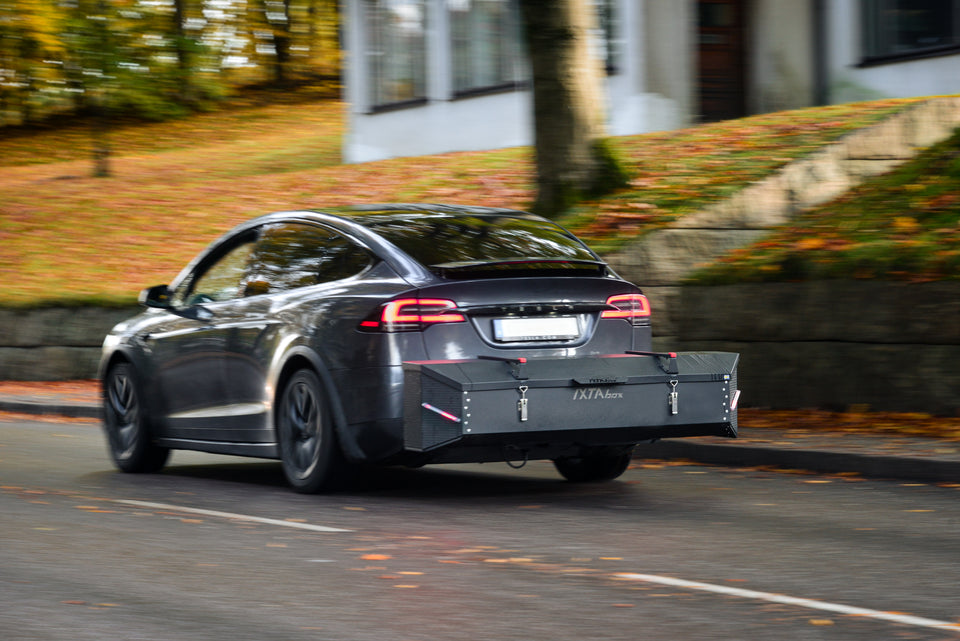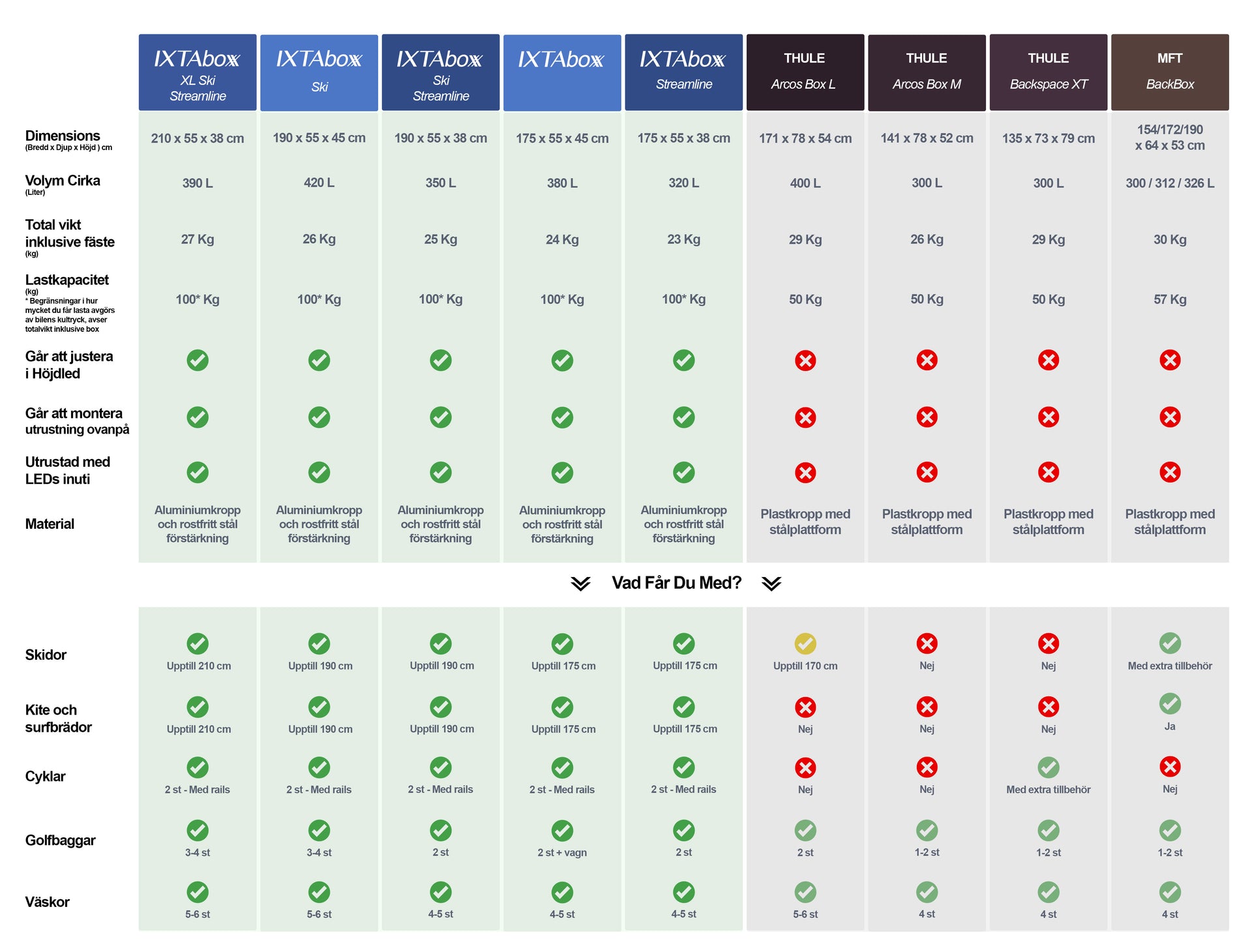Aerodynamics - The Impact of Wind Drag
Increased wind drag has a particularly high impact on driving performance for electrical vehicles and vehicles with relatively weak engines. Unfortunately, there is no one formula that can be used to calculate how fuel consumption/electricity and consequently how the range is impacted by wind drag. The reason is that drag is dependent on several factors, including the following main ones; car size in relation to the roof box and the strength of the engine.
We make two extreme examples to clarify:
Imagine a small car with a weak engine and a large roofbox, versus a large SUV that is not very aerodynamically shaped with a strong engine.
In the case of the small car with a large roofbox, the fuel consumption could increase by >50% since the combination of a larger Ap, a much worse Cd and a weak engine will consume an increased amount of fuel to make the car move forward.
In the case of the large, not very aerodynamic SUV, the percentage impact will be relatively small even with a large roof box. The Ap and Cd do increase, however, the strong (fuel-thirsty) engine absorbs the extra drag force load and the fuel consumption increase probably falls in the 5-10%. Not to forget the larger car has a much higher fuel consumption from start.
Based on literature studies and examples from people driving with roof boxes, we find that for a medium-sized car fuel consumption increases by 10-30%. With an IXTAbox the impact on fuel consumption and range is 65-75% lower compared to rooftop boxes, i.e., 2-10% pending model and car combination.
Based on my own experience having driven more than 50 000 km using a Tesla X, with mainly the 190x40 IXTAbox, I estimate that the added fuel consumption is in the -3% to +3% range. However, velocity has an impact on fuel consumption and range; meaning these numbers are not guaranteed in speeds over 120km/h.
As society is moving into using more and more electrical vehicles, all carmakers are developing more aerodynamic cars as it is one of the key factors to reduce fuel consumption per km.
The following example provides a clear example of how carmakers push range for smaller cars. For example, VW's new iD3 is not built to be fitted with a rooftop box, the simple fact being that this relatively small car with a modest engine, would get terrible range performance when using a roof box.
Still, the future in many ways is in the increased use of smaller cars. Many people search for a car that is easy to park and use in congested cities, however, this also means sacrificing space in the car. The solutions that IXTAbox provides can be the difference between buying a larger car to carry everything with you, versus buying a smaller car and using an IXTAbox to bring the gear along. All of this without sacrificing your range and fuel consumption.
Going forward, we believe that the increased demand for electric vehicles will call for better aerodynamics to maintain/increase range; plus, the unavoidable need to bring extra gear along with you will continue to push the demand for cargo boxes positioned behind the car.


